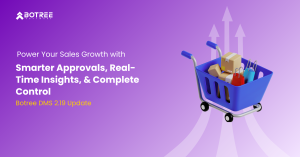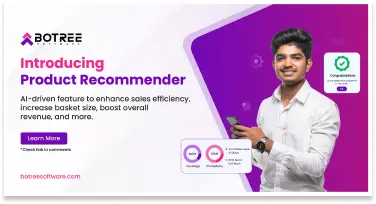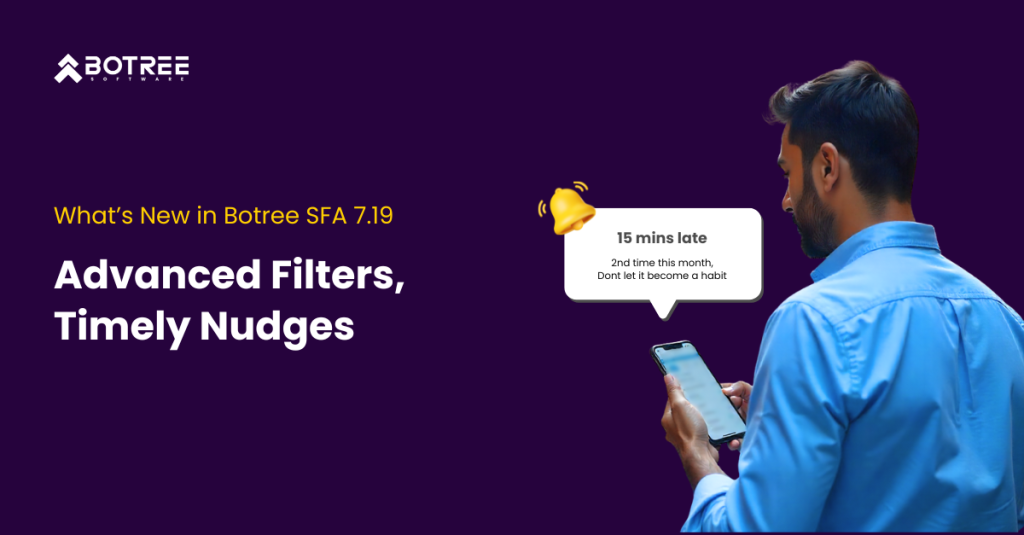
Power Your Sales Growth with Smarter Approvals, Real-Time Insights, & Complete Control with DMS 2.19 Update
Power Your Sales Growth with Smarter Approvals, Real-Time Insights, &

Power Your Sales Growth with Smarter Approvals, Real-Time Insights, &

Introducing the AI-Driven Product Recommender to Maximize Basket Size at Every Outlet
We are thrilled to introduce our latest innovation, the Product Recommender, designed to transform the way businesses optimize their product offerings and enhance sales productivity.

Field sales is a fast-paced environment, and small issues can slow it down. Browsing through long product lists, missing your login by five minutes, or having trouble with planning tools that don’t fit your workflow can create obstacles. These aren’t just technical problems; they drain focus and slow down progress.
In this latest update, we’ve tackled three common hurdles with straightforward improvements. They are not just features; they are upgrades to your workflow. From smarter filters and timely reminders to organized journey planning, each change enables your teams to work faster, stay coordinated, and concentrate on selling.
Here’s what’s new:
Let’s look at what’s new.
Let’s consider a common situation. A sales rep is placing an order on the SFA app. The brand list shows a long list of names, some familiar and some not. They pause, trying to remember which sub-brand belongs were. They might even scroll past a brand they recognize only by its packaging. The system isn’t broken, but it certainly slows things down.
The Solution: We’ve made a visual upgrade to the product filter. Brands and sub-brands now appear as images—logos or product visuals—rather than just text. These images come directly from the DMS product hierarchy and display in a clean, scrollable format.
A new option, “Enable Brand Filter for Product,” controls this feature:
A second option, “Brand Filter Level in Order Booking,” allows filter control by:
A salesperson walks into a general trade store. The retailer says, “Order me the green shampoo—the usual one.” The salesperson opens the order screen, taps the brand logo instead of searching by name, and quickly finds the right product line. No guessing. No delay. Just a few taps.
Let’s be honest. Starting the day on time sounds simple, but in field operations, it’s easy to fall behind. A quick delay, a missed check-in, or forgetting to mark attendance can result in lost hours and reduced productivity. The challenge isn’t only about discipline; it involves visibility and building habits.
The Solution: We’ve introduced a smart nudging system that reminds and rewards field teams for attending on time. It helps create consistency through notifications, gentle reminders, and adjustable alerts.
A new backend configuration allows toggling of three types of nudges:
On-Time Attendance Nudge:
Late Attendance Nudge:
A salesperson used to log in a few minutes late almost every day. With the new attendance nudge feature, they now receive a gentle reminder at 9:50 AM. After three early check-ins in a row, they even got a congratulatory nudge.
Creating a Permanent Journey Plan (PJP) should enable productivity, not be a complicated process. Until now, reps could create PJPs freely, but there was no way to validate those plans, check for visit frequency compliance, or ensure consistency across the team. For growing teams, this led to inefficiencies, missed opportunities, and a lack of visibility.
The Solution: We have redesigned the PJP assign screen to promote smarter planning, frequency validation, and a built-in approval process. Whether it’s one route or several, for oneself or the team, PJP is now structured, trackable, and accountable, just as it should be.
Route & Class-Based Planning:
Visit Frequency Validations:
PJP Approval Flow:
UI Highlights:
Hierarchy Logic:
Deviation Handling:
Reporting & Integration:
A supervisor plans their team’s routes for the upcoming month. The system flags any under- or over-visited outlets and blocks submission until corrected. Once submitted, the manager reviews the plan, approves it, and it becomes active. If a salesperson forgets to plan next month’s visits, trying mid-month will trigger a flag and require supervisor approval. This keeps everyone on the same page without confusion.
These updates aren’t only about fixing problems; they focus on making what already works even better.
With visual filters, reps can operate more quickly and make decisions with greater confidence. Reminders encourage discipline without being overbearing. The new PJP workflow clarifies planning, approvals, and execution.
What connects them all is intent: each update is based on how real salespeople operate in the field. It’s not about adding more screens or steps; it’s about removing the ones that don’t help.
When sales tools are simple, responsive, and designed for how people work, productivity becomes the norm instead of just a goal.
Meet Christina Evangelin Ebinezer, our dynamic marketing associate at Botree Software. With a background in HR and marketing, and prior experience as a content writer, Christina brings a sharp eye for storytelling and a knack for crafting engaging blogs and marketing content. She’s passionate about turning ideas into words that drive impact. Outside of work, Christina finds joy behind the piano keys or the wheel—whether she’s playing a soulful tune or cruising down open roads.

Meet Mr. Vinit Kumar, Product Owner and a seasoned IT professional with over a decade of diverse experience in solutions like DMS, SFA, CRM, and ERP. His expertise lends a fresh perspective to product management. Having spearheaded multiple products & projects, his collaboration with Botree aims to propel product innovation to new heights.
